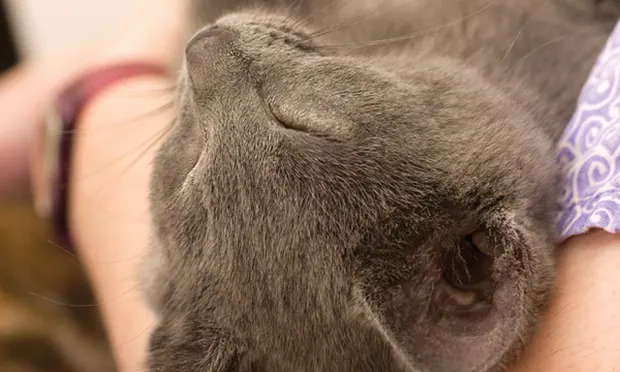Feline Phlebotomy: Proceed with Care

True aneurysms are focal or diffuse dilations >50% of the original vessel diameter with thinning of the vessel wall; all wall layers remain intact. Pseudoaneurysms are dilations in the vessel wall in which all wall layers are not intact. The defect is in the tunica intima and media; the adventitia or encapsulated hematoma composes the outermost layer. The hematoma is in communication with the vessel, causing turbulent blood flow. Although rare, trauma or foreign objects are the most common causes.
A 4-month-old kitten had a pseudoaneurysm subsequent to jugular venipuncture. During phlebotomy, the kitten vocalized, collapsed, and defecated, but seemed to be normal 30 minutes later. A large mass was subsequently noted at the venipuncture site. The cat was discharged with a hematocrit of 35%. Four days later, hematocrit was 17%, and the owner had noted 3 or 4 additional episodes of vocalization, neck extension, and apparent pain. Cervical ultrasound revealed a layered, mixed echogenic area ~2 cm. An irregularly round, thick-walled, 2-cm anechoic/cystic lesion was seen adjacent to the carotid artery. Conservative management was elected. Reexamination 2 weeks later showed Horner syndrome on the kitten’s left side; pseudoaneurysm diameter was now 1 cm. The superficial hematoma had nearly resolved and the kitten was comfortable. One month after original presentation, Horner syndrome had resolved and the mass effect was barely palpable.
CommentaryCareful phlebotomy of the jugular vein is always warranted in cats. Although complications are rare, care should be taken to avoid venipuncture of the carotid artery: the needle should be directed parallel with the jugular vein without fishing around for the vein. Also, jugular venipuncture should never be attempted on an awake animal that is moving or in respiratory distress. Interestingly, this kitten did quite well with conservative care, and the formation of the pseudoaneurysm demonstrated the body’s attempt to heal itself after trauma and the ability of the practitioner to achieve diagnosis through noninvasive and simple technology.—Heather Troyer, DVM, DABVP, CVA
Related Article: How to Perform a Feline Venipucture
SourceCarotid artery pseudoaneurysm in a cat. Townsell MY, Biller DS, Grauer GF. J FELINE MED SURG 14:819-821, 2012.